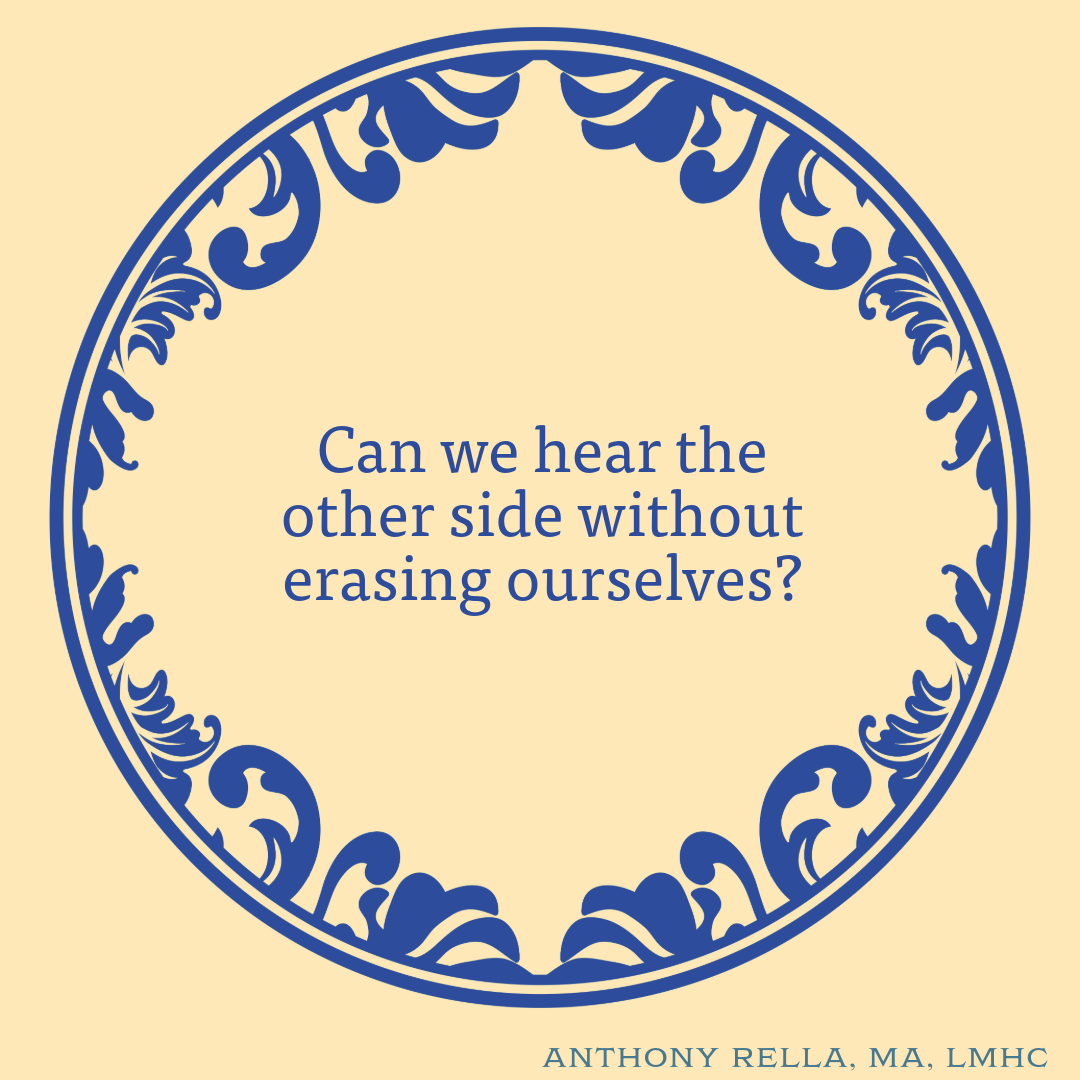Occasionally when exploring a conflict with another person, I’ll try an exercise of imagining that I am the other person and going through the conflict from their perspective. I only do this after I’ve thoroughly explored my own thoughts and feelings about the issue and feel clear about what’s upsetting me. Then I can try imagining the other person’s thoughts and feelings from the view that they’re just like me, they’re trying to be loved and safe at the same time, and all of their actions are coming from that place.
This is not a substitute for talking to the other person, but it helps to slow things down. If I tend to think in terms of other people being evil, hostile, stupid, while I am always right, pure, goodhearted, then I will have a harder time repairing friendship with another person when there’s a problem. At the same time, if I only think about their wellbeing and don’t take the time to understand what bothers me about what is happening, then any repairs I make will quickly be undone when the same problems happen again.
The people in my cultural bubble have decidedly shifted toward the “you don’t owe anyone anything, feel empowered to cut them off if they’re not serving you” end of things, and that has its time and place. It’s good to know you can protect yourself, have standards, and choose the people you want to be around.
And it’s also true that eventually the people you are around will have differences, will have problems, will have fights. If we cut off every relationship with these problems then we will have few to tend. It’s also true that life forces us to have relationships with people we’d never choose—coworkers, neighbors, family, people in positions of authority over the things we need. We don’t have to invest the same level of care in those relationships, but we need to be able to deal with them and figure out how to work through problems when they come up. It’s worth looking at how to do both, to validate my truth and acknowledge another’s experience.


